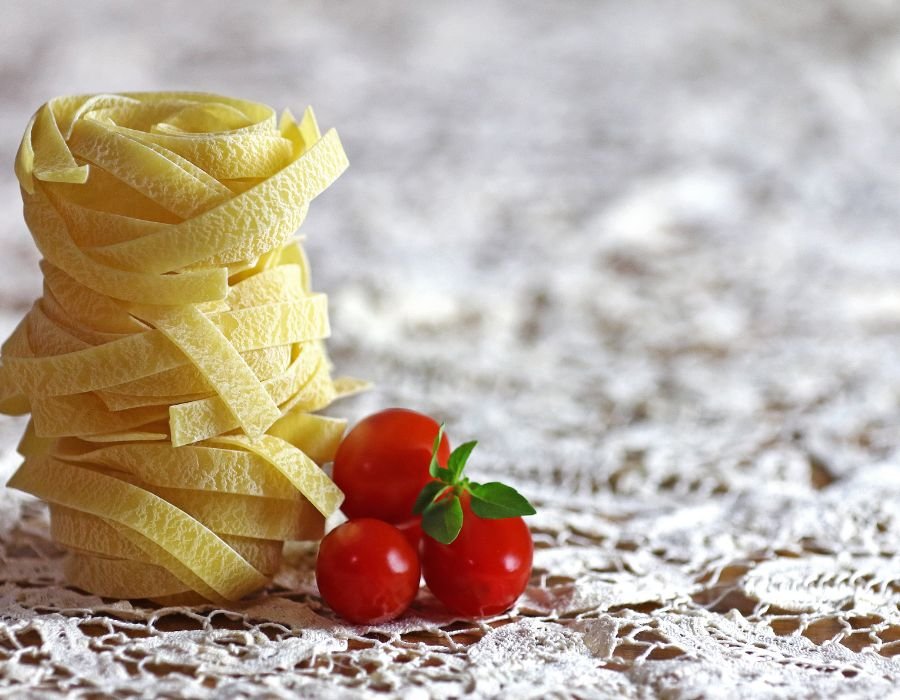1. Origin & Inspiration
Q: Are you able to inform me concerning the story behind the tablecloth used on this robe?
A: Every robe begins with a tablecloth that holds historical past—whether or not from a bride’s household assortment, an area flea market, or an vintage vendor right here in Italy. Some items date again to the Nineteen Twenties or earlier. They typically carry the feel of a well-lived life, from Sunday meals to household celebrations.
Q: Was it a classic piece, heirloom, or sourced from an area market in Italy?
A: The entire above. Italy has an abundance of high-quality classic desk linens. In locations like Arezzo or Florence, you’ll discover markets overflowing with hand-embroidered linens, many handed down for generations. Youthful Italians and foreigners alike are actually embracing these forgotten treasures and giving them a brand new life.
Q: What makes classic or vintage desk linens ideally suited for marriage ceremony attire?
A: The craftsmanship. These linens are sometimes handmade with intricate lacework, monograms, or hemstitching you not often discover in trendy textiles. The cottons and linens used are sturdy, breathable, and ideal for summer time. And most significantly, they carry soul.
2. Design Course of
Q: Who designs the robes constructed from these repurposed supplies?
A: The designs are a collaboration between our lead bridal designer and the bride. We tailor the costume idea across the cloth’s strengths—inserting lace borders alongside hems or reworking monogram corners into bodice particulars. It’s actually couture.
Q: How do you protect the unique fantastic thing about the material (like embroidery, lace, monograms)?
A: We begin by learning the textile’s structure and motifs. We by no means lower right into a monogram or a central embroidery except the bride agrees. In lots of circumstances, we place these particulars in focal areas—like a corset again or a prepare. Every choice is intentional.
Q: Are the attire designed particularly for summer time weddings? How does the design mirror the season?
A: Sure. Italian summers might be heat and sun-drenched, so our silhouettes are mild and ethereal. Assume open backs, brief sleeves, breathable linings, and removable overskirts. The pure linen and cotton maintain brides cool and radiant.
3. Tailoring & Craftsmanship
Q: Who’s chargeable for tailoring the ultimate marriage ceremony robe? Is it achieved in-house or in collaboration with native artisans?
A: All tailoring is finished regionally, both in our personal atelier or in partnership with expert seamstresses in Tuscany. Italy has no scarcity of textile artisans—we’re fortunate to work with girls who’ve been stitching since childhood.
Q: What number of hours does it usually take to remodel a tablecloth into a totally wearable, bridal robe?
A: Relying on the complexity, anyplace from 50 to 100 hours. It’s a meticulous course of, particularly when preserving detailed embroidery or adapting fragile sections.
Q: What are a number of the technical challenges concerned in working with classic cloth?
A: The most important problem is cloth situation—some linens could also be brittle or discolored. We fastidiously clear and reinforce areas as wanted. Additionally, there’s no margin for error: as soon as you narrow into vintage lace, you may’t exchange it.
4. Personalization & Sentiment
Q: Do brides carry their very own household tablecloths or do you assist them supply one?
A: Each. Some brides come to us with heirlooms—grandmother’s tablecloths from their trousseau. Others select from our curated assortment, which we supply from vintage markets throughout Italy.
Q: How do brides react once they see their household heirloom became a costume?
A: It’s extremely emotional. We’ve had tears of pleasure and heartfelt tales shared in fittings. One bride stated she felt like she was bringing her nonna to the altar along with her.
Q: Are there any symbolic parts (e.g. holding stains, embroidery initials) that brides request to maintain?
A: Completely. Some brides ask us to not bleach out faint wine stains or protect stitched initials precisely as they’re. These “imperfections” are reminiscences—a part of the attraction.
5. Sustainability & Tendencies
Q: Why do you suppose extra brides are selecting classic textiles for his or her weddings?
A: It’s private, significant, and sustainable. As a substitute of a cookie-cutter robe, brides get one thing with historical past and coronary heart. Classic supplies additionally align with the rising need to devour much less and treasure extra.
Q: What function does sustainability play in your design philosophy?
A: It’s on the core. We’re not simply making attire—we’re rescuing forgotten magnificence from storage trunks and giving it new function. Each robe is a celebration of gradual trend and considerate dwelling.
Q: Do you see this as a rising pattern in Italy, particularly for vacation spot or countryside weddings?
A: Undoubtedly. In areas like Puglia, Tuscany, and Umbria, {couples} are embracing rustic magnificence. Brides need one thing bespoke, inexpensive, and distinctive. Our robes may even be worn once more—shortened into summer time attire or christening robes.
6. Cultural & Native Context
Q: How does the Italian summer time marriage ceremony scene affect your alternative of cloth and magnificence?
A: Lightness is vital. We select breathable cottons and linens that transfer fantastically and don’t cling in warmth. Kinds mirror the countryside: tender, romantic, and infrequently designed to be worn barefoot on olive farm lawns or underneath winery canopies.
Q: Are there specific areas in Italy (e.g. Puglia, Tuscany) the place this pattern is extra standard?
A: Sure, particularly in Tuscany, Puglia, and elements of Umbria. These are standard for rustic-chic or countryside weddings, the place the aesthetic is grounded in heritage, nature, and intimacy. Classic tablecloth robes mix completely into this setting.




